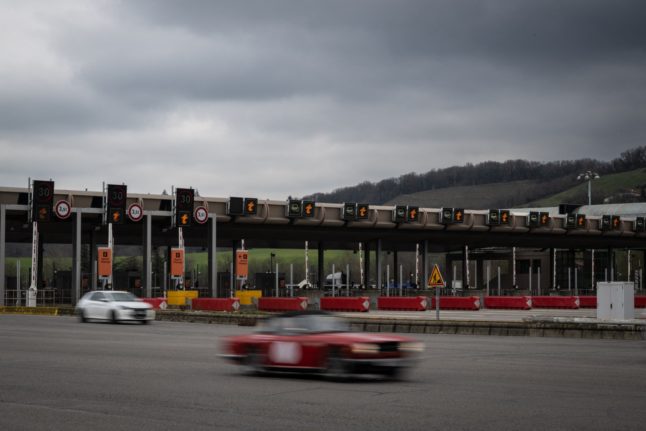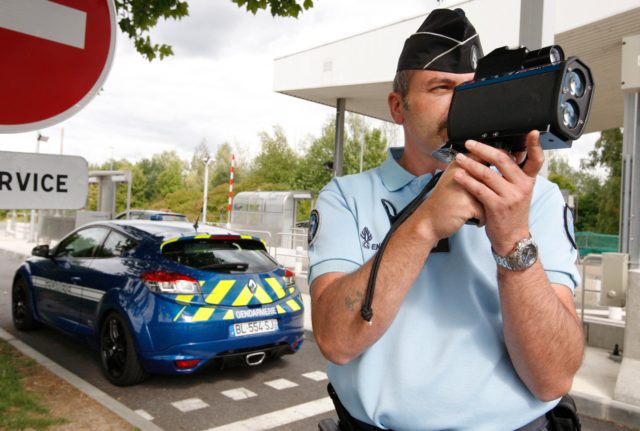In the coming months, France will begin introducing free-flow (flux libre) tollbooths on the A13 and A14 motorways, which run along the Paris-Normandy Axis. The free-flow tollbooths will scan licence plates, allowing motorists to keep driving through the tolls without having to stop to pay.
The process will first start along the A13, with free-flow tollbooths installed by June 2024, and it will later be expanded to the A14 motorway by December 2024, both of which are operated by the Sanef company. It could be expanded around the country if the scheme is a success.
Motorists will have up to 72 hours after passing through the tollbooth to pay, either by entering their licence plate number online to the Sanef website or going in person to a participating tabac.
People will also be able to continue to use a ‘télépéage’ toll badge or create an account on the Sanef website in advance of their journey so that they pay automatically.
READ MORE: Péage: France to start scrapping motorway tollbooths
So what about tourists, visitors and those with foreign-registered cars?
The system seems clear for those vehicles with a French number plate, but what about those whose vehicles are registered elsewhere, such as the tens of thousands and tourists and second-home owners who drive in France each year?
The Local put this question to one of the directors of the free-flow tollbooth project with Sanef, Joselito Bellet.
“The rules will be the same for both foreigners and for French motorists. We are trying our best to make sure the system works in the same way for everyone, even if they have a foreign vehicle,” Bellet said.
“People with vehicles with foreign licence plates will be able to pay using the Sanef website, in the same way as those with French vehicles.
“Both will enter their licence plate number and pay the fee, and both have 72 hours to pay. People driving foreign vehicles will also be able to create an account on the Sanef website too, so they can pay in advance if they like.
“We will soon begin working with the tourism offices, as well as the communication teams at the Eurotunnel and at the Port of Calais to help offer more information in English to foreign motorists.
“The Sanef payment website will also be available in English. We will set up a call centre with an English-language option, so people will be able to direct their questions there.”
For rental cars, Bellet explained that the process will be the same: they can either pay using their own personal toll badge (you can use this in different cars, as long as they are the same ‘class’), by creating an account ahead of time, or afterwards using the website or one of the participating tabacs.
He added that will put out flyers and reminders (in English) so that people do not forget to write down their rental vehicle’s licence plate number.
What if you forget to pay?
For those who forget to pay within the 72 hours, there will be a late fee applied.
Bellet explained that if you pay within two weeks of receiving the letter informing you that you forgot to pay, then the fee will only be €10. However, after two weeks, that penalty can go all the way up to €90.
For foreigners covered by the EU car registration system EUCARIS, you will receive a letter informing you that you forgot to pay and explaining (in both French and English) how you can do so and the fee structure if you do not do it right away.
For motorists with vehicles from non-EU countries, including the UK, he said “Sanef will pass through debt collection agencies in those countries and we will follow their local rules for this.”



 Please whitelist us to continue reading.
Please whitelist us to continue reading.
I’m sure the rental car companies will attach a fee to use a system as they do in the USA. If you don’t pay in a rental car, the rental company will be notified and charged the late fee, I assume – and they will pass it on plus an additional fee, to the renter.
We have used a Liber-t badge for nearly 20 years now. (Holiday home – not resident) Cost-effective and convenient. Pay in France in €
This will prove to be punishing for tourists who will either not understand the system or simply forget to pay – another way to boost the profits of rental car companies once they take on their charges.